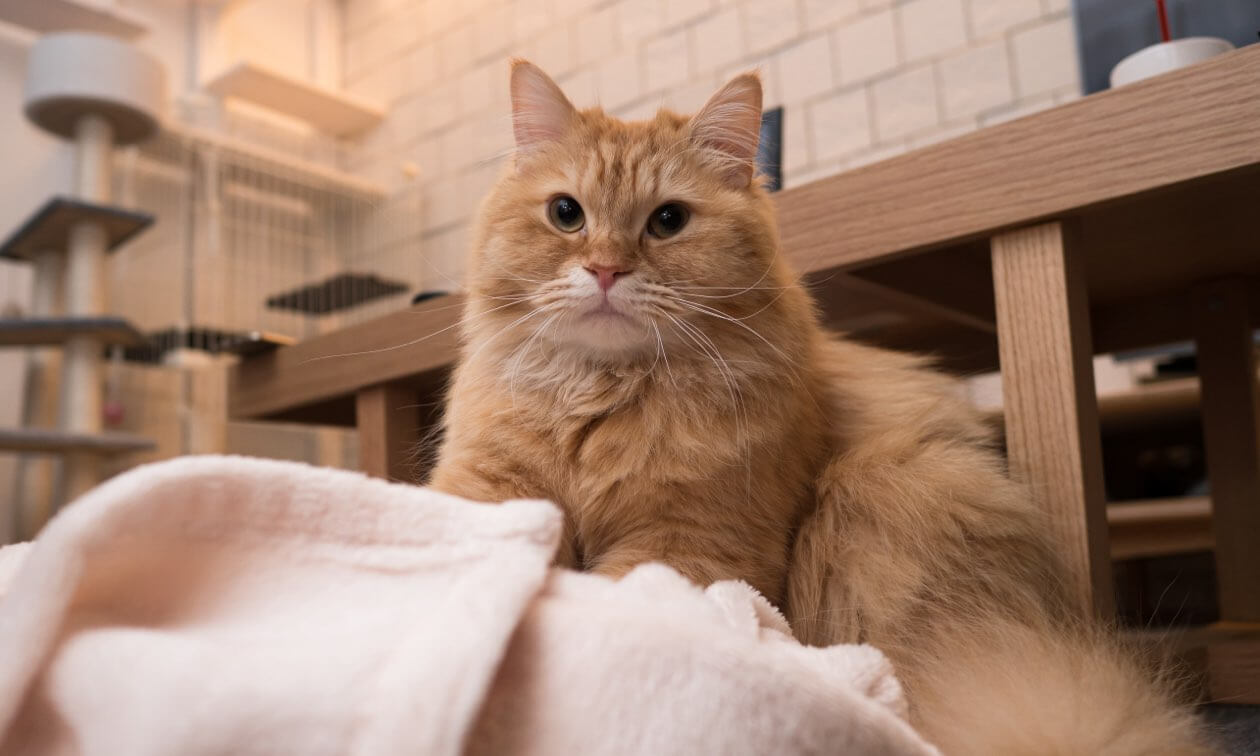As one of the most popular health and wellness trends in the past few years, essential oils have taken over medicine shelves and fragrance diffusers everywhere. Essential oils are the concentrated oil of the leaves, flowers, or roots of plants, distilled to purity and occasionally diluted by "carrier" oils. Even though these oils are natural and widely used, it doesn't necessarily mean they are safe to use on or around your pets.
Are Essential Oils Safe for Cats and Dogs?
There is a lack of scientific research available about essential oils and their effects on cats and dogs to support the idea that they are safe. From experience, scientists know that many essential oils are not safe for pets.
Because scientific information doesn't exist for many essential oils, your best bet is to speak with your veterinarian to determine if your pet will be affected by the oils you're using for yourself. However, not all veterinarians are knowledgeable with essential oils, or there may not be a veterinarian local to you that has this expertise. Any research you find should be shared with your veterinarian so that you can both align on your pet's overall healthcare approach, as there many factors to consider.
How Essential Oils are Used (and How They Affect Your Pet)
Essential oils are typically used in the following ways:
Diffusion
Diffusing oils is a common method used to make your home smell nice, typically through reeds or an electric diffuser. But be careful when diffusing essential oils around your pets. Microdroplets of oils can be inhaled and cause irritation and inflammation in your pet's lungs and can absorb through the lungs and enter the bloodstream.
Diffusion can be particularly problematic for pets with existing respiratory conditions (such as cats with asthma or chronic upper respiratory infections, or dogs with chronic bronchitis). If you diffuse essential oils in your home, only do it for short periods in a place away from your pet or be sure they can escape from the room where essential oils are diffused. Let fresh air into the room (by opening the window for a period of time, for example) before letting your pet back in.
Orally
Oral application refers to giving the oil by mouth either directly or into the pet's food for them to eat. In this case, the essential oil moves down the esophagus into the stomach and then moves to the small intestines where it can cause inflammation and ulcers and absorb into the bloodstream.
Topical Application
Applying essential oils topically takes advantage of the skin's ability to absorb oils. When applied, an essential oil moves down through the layers of the skin and can cause inflammation or a break in the skin until it reaches and enters the bloodstream.
If administering essential oils orally or topically, double-check with your veterinarian that the essential oil is not toxic for your pet and use only after diluting properly.
Be Careful Using Essential Oils for Pets
It's essential (pun intended) to be cautious when diffusing, applying, or administering essential oils for pets. Many essential oils contain compounds and molecules that can cause damage to the skin, intestines, and lungs while entering their body and, once inside, can cause damage to organs in the body such as the liver, kidneys, and central nervous system. Essential oils that cause this kind of extensive bodily harm are often concentrated or improperly diluted.
Essential Oil Toxicity in Pets
Essential oil toxicity can happen fast or build up over time. The results can range from respiratory distress, liver damage, anemia, or even organ failure and a whole lot more. If your dog or cat has been exposed to essential oils and you see any of these symptoms, call your veterinarian or animal poison control immediately:
- Abnormal panting or breathing
- Coughing
- Decrease in energy
- Depression or change in demeanor
- Diarrhea
- Drooling
- Paralysis of the legs
- Runny nose
- Skin irritation
- Tearing eyes
- Tremors
- Uncoordinated walking
- Weight loss
- Wheezing
Are There Pet-Safe Essential Oils?
Some products are listed as pet safe, but there are no regulations that manufacturers must follow to prove an essential oil is safe for pets. Depending on why and how you're looking to use essential oils for your pet, they may or may not work. Even more concerning, these oils may even be unsafe and cause harm to your pet.
Each pet can react differently to whatever they are exposed to. Do not assume that because your friend's pet, neighbor's pet, or a pet on the internet reacted well, that your pet will react the same to essential oils.
Essential Oils to Avoid Using on or Around Cats and Dogs
Any essential oil has the potential to be harmful to pets, especially if not properly diluted or if used inappropriately. The lists below contain some of the most commonly misused essential oils causing issues for cats and dogs. (This is not a comprehensive list and you should ask your veterinarian about any essential oil prior to considering using it with your pet.)
Essential oils that are unsafe for cats:
- Basil
- Citrus oils (bergamot, grapefruit, lemon, lime, orange, tangerine)
- Birch
- Cinnamon
- Clove
- Dill
- Fennel
- Tea tree (Melaleuca)
- Oregano
- Peppermint
- Thyme
- Rosemary
- Spearmint
- Wintergreen
Essential oils that are unsafe for dogs:
- Tea tree (Melaleuca)
- Sweet birch
- Pine (Pinus sylvestris)
- Pennyroyal (Mentha Pulegium)
- Wintergreen (Gaultheria Procumbens)
Given what we know about the effects of essential oils on dogs and cats, it's safest to avoid using them on pets until you speak with your vet about your essential oil use and intentions.
ZPC-00853R2




